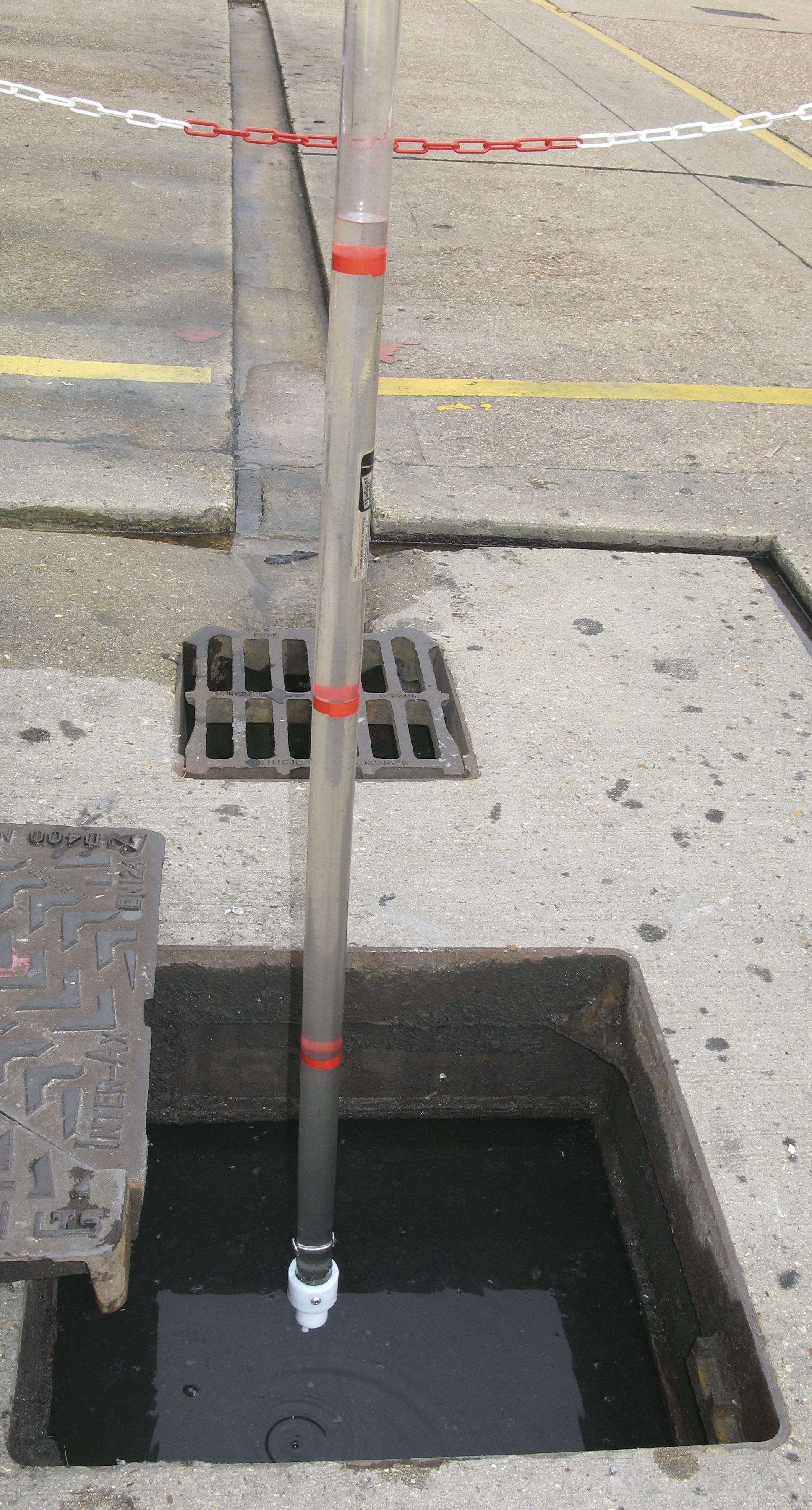The recommended method for oil interceptor maintenance varies between manufacturers. One may suggest emptying where another will suggest inspection at 3 6 or 12 month intervals. If the depth of oil retained or the silt built up in the chambers has reached the maximum design level, then emptying should occur irrespective of the predetermined intervals.
Under normal operating conditions, the level of oil and silt in many separators does not build up sufficiently to require a cleanse on a set timescale. There are many factors that will effect the build-up of oil and silt, but in many cases an empty of the interceptor may not be necessary.
We believe that our sampling and testing service provides the most pragmatic and effective method of oil interceptor maintenance.
Separator Sampling and Testing
Sampling of a separator consists of several elements.
- Assessing the depth and amount of oil and other hydrocarbons accumulated in the separator
- Assessing the depth and amount of silt accumulated in the separator
- Sampling of the final discharge of the tank.
 The depth of oil and silt is checked to ensure that it is within the tolerance as set down by the manufacturer. A sample is taken of the final discharge and transported to an accredited independent laboratory. The requirements for analysis depends upon the discharge permit. Generally, the consent will require the levels of Oil and Grease (hydrocarbons), suspended solids, pH and Chemical Oxygen Demand (COD) to be established. Other water authorities may require additional testing, for example Sulphate, Phosphate, Phosphorus, Settleable Solids or Rapidly Settleable Solids.
The depth of oil and silt is checked to ensure that it is within the tolerance as set down by the manufacturer. A sample is taken of the final discharge and transported to an accredited independent laboratory. The requirements for analysis depends upon the discharge permit. Generally, the consent will require the levels of Oil and Grease (hydrocarbons), suspended solids, pH and Chemical Oxygen Demand (COD) to be established. Other water authorities may require additional testing, for example Sulphate, Phosphate, Phosphorus, Settleable Solids or Rapidly Settleable Solids.
The testing of the sample may take up to ten working days to be completed by the laboratory. A report detailing the findings will then be supplied to the site owner.
Why use sampling and testing rather than periodic emptying?
Depending on the size of an interceptor, tankering companies can charge up to £700 per cleanse. Typically this will be at 6 monthly intervals depending upon the application and usage. An interceptor cleanse will involve removing the contents of the tank and normally refilling with water.
What this process will not do is:
- Determine the amount of accumulated oil and other hydrocarbons
- Determine the amount of accumulated silt
- Show the trend of oil and silt build up
- Indicate whether the cleanse was or was not actually required
- Confirm whether the tank is discharging within consent levels
So regular sampling can give all of these benefits. Each time a sample is taken, the report will detail what state the contents and discharge are in so you can make the judgement whether a cleanse is required. If no oil and silt build up has occurred, then a cleanse could be deferred until the results from the next sampling cycle has been completed. Analysis of samples is carried out by a UKAS accredited lab.
But if a serious event, such as an oil spill, occurs on the site, it might be necessary to undertake an emergency sampling of the tank to determine if an immediate cleanse of the interceptor is required.



